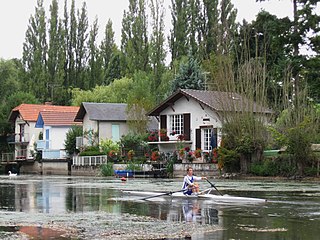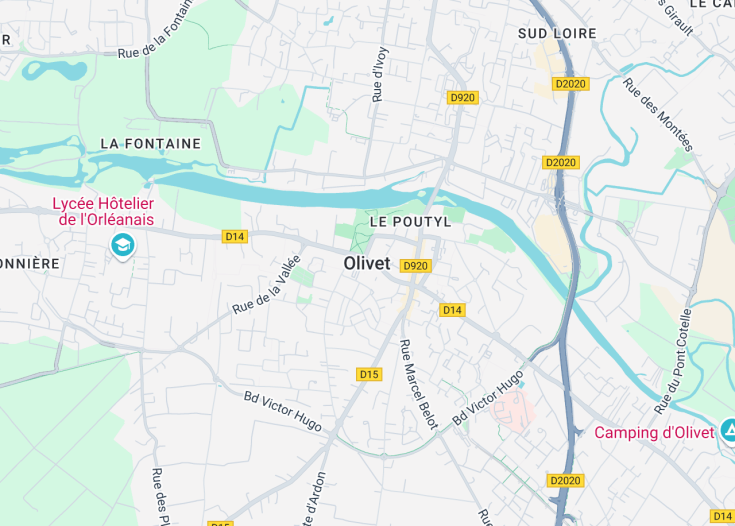Olivet, nestled along the serene banks of the Loiret River in north-central France, epitomizes rustic charm and tranquility. Renowned for its picturesque landscapes and verdant parks, this suburban town offers an ideal retreat from the bustling energy of city life. The town’s ancient roots are evident in its well-preserved architecture and historical sites, making it a fascinating destination for history enthusiasts and culturally inclined travelers. Olivet also boasts a rich culinary tradition, offering a taste of authentic French cuisine that complements its scenic beauty.
Ensure to visit the ancient Church of Saint-Martin, an architectural gem that dates back to medieval times and reflects the rich history of Olivet.
Plan your visit in spring to experience Olivet’s lush landscapes in full bloom, enhancing the town’s picturesque beauty and tranquil ambiance.
Top things to do & see in Olivet
Select the following sights and activities to discover best tickets and tours available in Olivet.
Olivet: A French Commune Brimming with Charm
- Orléans – Saint-Denis-de-l’Hôtel Airport (12 mi / 19 km)
| Country | France |
| Time in Olivet | GMT+1 |
| Language spoken | French |
| Population | 22,546 (source: latest city census data) |
| Currency | Euro (€, EUR) |
| Airports |
Olivet is a picturesque commune in north-central France. Located just south of Orléans along the banks of the Loiret, a tributary of the larger Loire River, Olivet plays a crucial role in the region’s agricultural and economic scenes. With its scenic river walks and traditional French architecture, the town is not just a hub for local commerce but also a destination for visitors seeking the charm of the French countryside.
[p]Historically, Olivet has been inhabited since the Gallo-Roman period, and over the centuries it has developed a rich cultural heritage. The town’s name is derived from the Latin ‘Oliva,’ pointing to the historical prevalence of olive trees in the area, which shaped the local agricultural landscape. Today, while olives are no longer a primary crop, the commune is known for other agricultural products, particularly cheeses, which are celebrated in local festivities.
Olivet’s modern-day allure is complemented by its commitment to preserving its natural and architectural heritage. Key attractions include the Château de la Fontaine, a classic example of French Renaissance architecture, and the Church of Olivet, known for its captivating 16th-century stained glass windows.
The community is tight-knit, proud of their heritage and keen on welcoming tourists to their annual festivals which showcase local crafts, cuisine, and music. The proximity to Orléans allows residents and tourists alike to enjoy the thrills of a bigger city while savoring the respite that Olivet offers.
Where is Olivet?
Olivet is located in north-central France, situated just to the south of Orléans, a major urban center in the Loire Valley.
Distances:
| Route | Distance by car | Time by car |
|---|---|---|
| Orléans to Olivet | 3.3 miles (5.3 km) | 10 minutes |
| Paris to Olivet | 74.6 miles (120 km) | 1 hour 30 minutes |
| Chartres to Olivet | 47 miles (75.6 km) | 1 hour |
What is Olivet famous for?
Olivet is renowned for its historical and natural beauty, particularly its riverside landscapes, traditional French architecture, and its contribution to the local cheese industry, celebrated through cultural festivals.
History
From Prehistory to the Gallo-Roman Era
The earliest evidence of human settlement in Olivet traces back to prehistoric times, where nomadic tribes were attracted to the rich natural resources of the Loiret area. Excavations have revealed stone tools and remains of ancient campsites, indicating a long history of human activity. Moving into the Gallo-Roman period, Olivet saw the establishment of more permanent settlements. Artifacts such as coins, pottery, and remnants of buildings provide a glimpse into life during the Roman dominance in Gaul, which saw the integration of Olivet into the extensive network of Roman provinces.
The Middle Ages (5th Century – 15th Century)
During the medieval era, Olivet was under the rule of various feudal lords. The development of agriculture, particularly sheep farming, shaped the local economy. The 11th century saw the construction of the Church of Saint Martin, which played a crucial role in the religious and social life of the community. In the following centuries, Olivet found itself occasionally caught in the conflicts between French and English forces during the Hundred Years’ War, impacting the town’s stability and development.
Modern Period (16th Century – 18th Century)
Olivet experienced significant growth during the Renaissance, benefiting from its proximity to Orleans. Art and culture flourished, attracting artists and intellectuals. The local economy diversified beyond agriculture, with the development of mills along the Loiret River. However, the town was not immune to the broader conflicts of France, feeling the effects of the Religious Wars and later the tumult of the French Revolution, which brought substantial social and political changes to Olivet.
19th Century to Present
The 19th century heralded the industrial era in Olivet, with the establishment of small industries and improved transportation links, including railways. This period marked significant urban development and population growth. In the 20th century, Olivet saw further transformation, particularly after World War II, with modern urban planning and expansion. Today, Olivet is distinguished by its blend of historical richness and modern vitality, offering both residents and visitors a peaceful yet dynamic living environment.
Visit Olivet
What to see and do in Olivet
Exploring Olivet offers a blend of historical and natural attractions. The heart of the town is home to the ancient Church of Saint Martin, showcasing impressive medieval architecture. For nature enthusiasts, the banks of the Loiret River provide picturesque walking paths, especially beautiful in spring and autumn. The Olivet Mills, with their historic significance, also merit a visit. For those interested:
- Walking tours along the Loiret River
- Visits to local artisan shops and markets
- Cultural events and exhibitions at local galleries
Seasonal Events in Olivet
Olivet hosts a variety of cultural and recreational events throughout the year. Notably, the Spring Festival, celebrating local culture and the start of the warmer months, and the Autumn Crafts Fair, which attracts artisans from across the region. Both events are held in the town’s historic center, drawing visitors into the communal spirit of Olivet.
Best time to visit Olivet
The ideal times to visit Olivet are during the spring and autumn months. During these periods, the weather is most pleasant, and the natural scenes around the town, particularly along the Loiret River, are in their full splendor, providing a magical backdrop for any visit.
Is Olivet worth visiting?
Olivet is certainly worth a visit for those who appreciate a mix of history and nature. The town offers tranquil river walks and rich historical sites. However, it lacks the high-energy nightlife some travelers seek, and its small size might not sustain interest for more than a few days. Overall, for those seeking a peaceful retreat with a touch of historical exploration, Olivet is an ideal destination.









